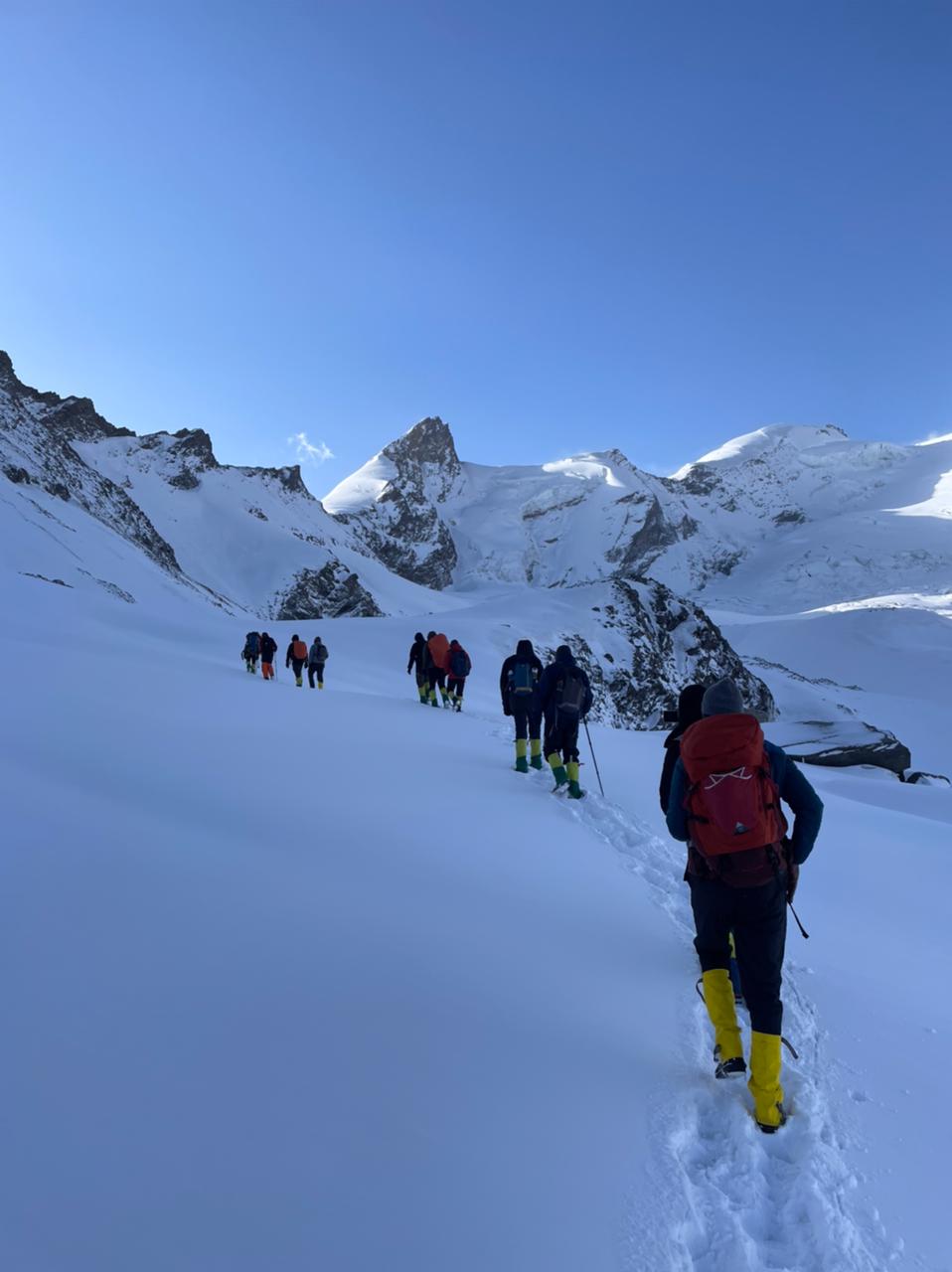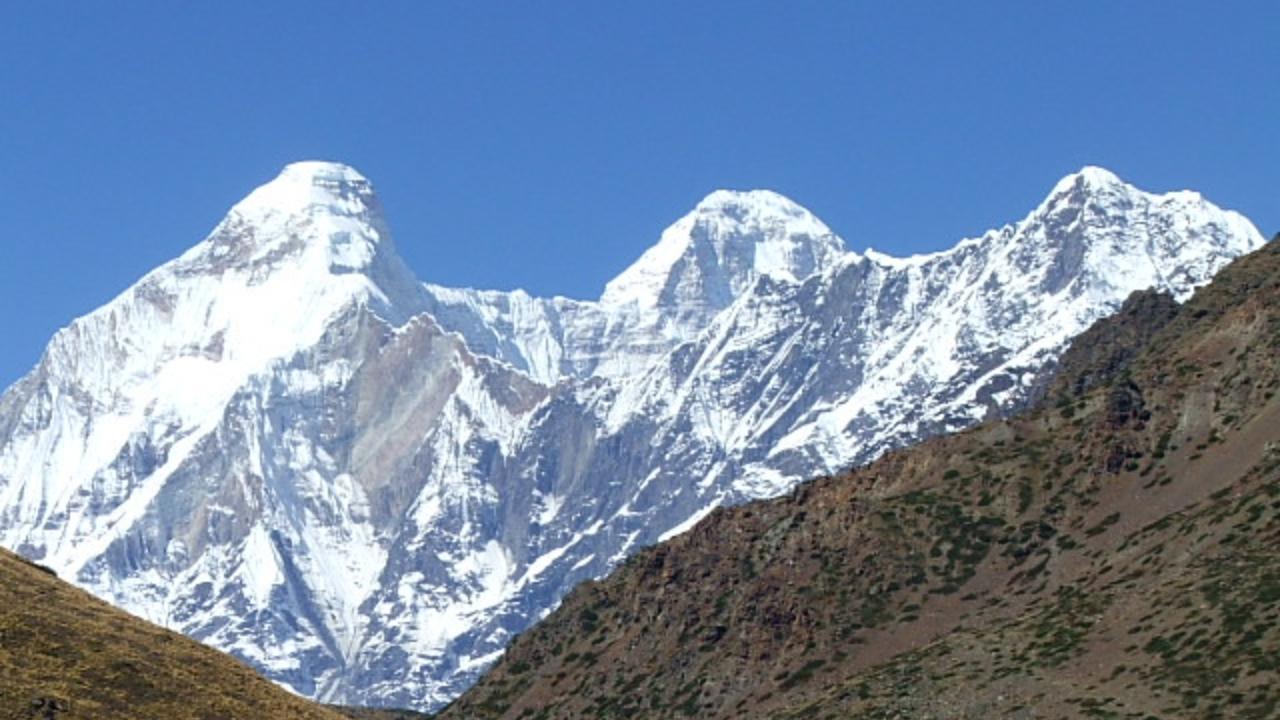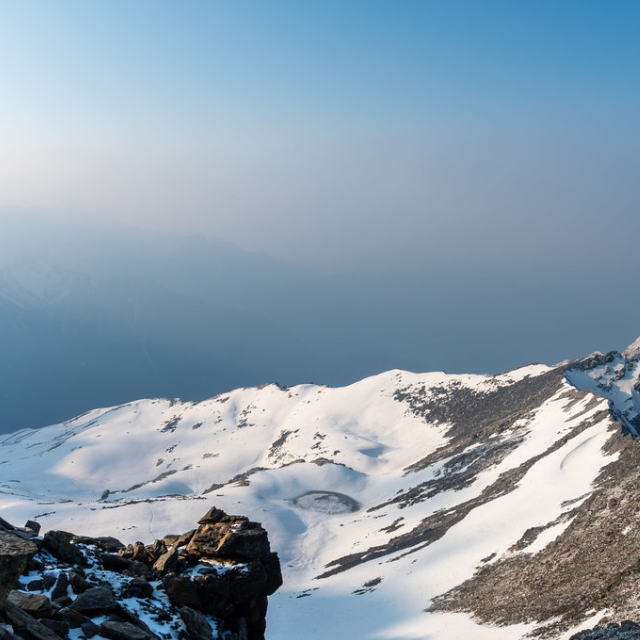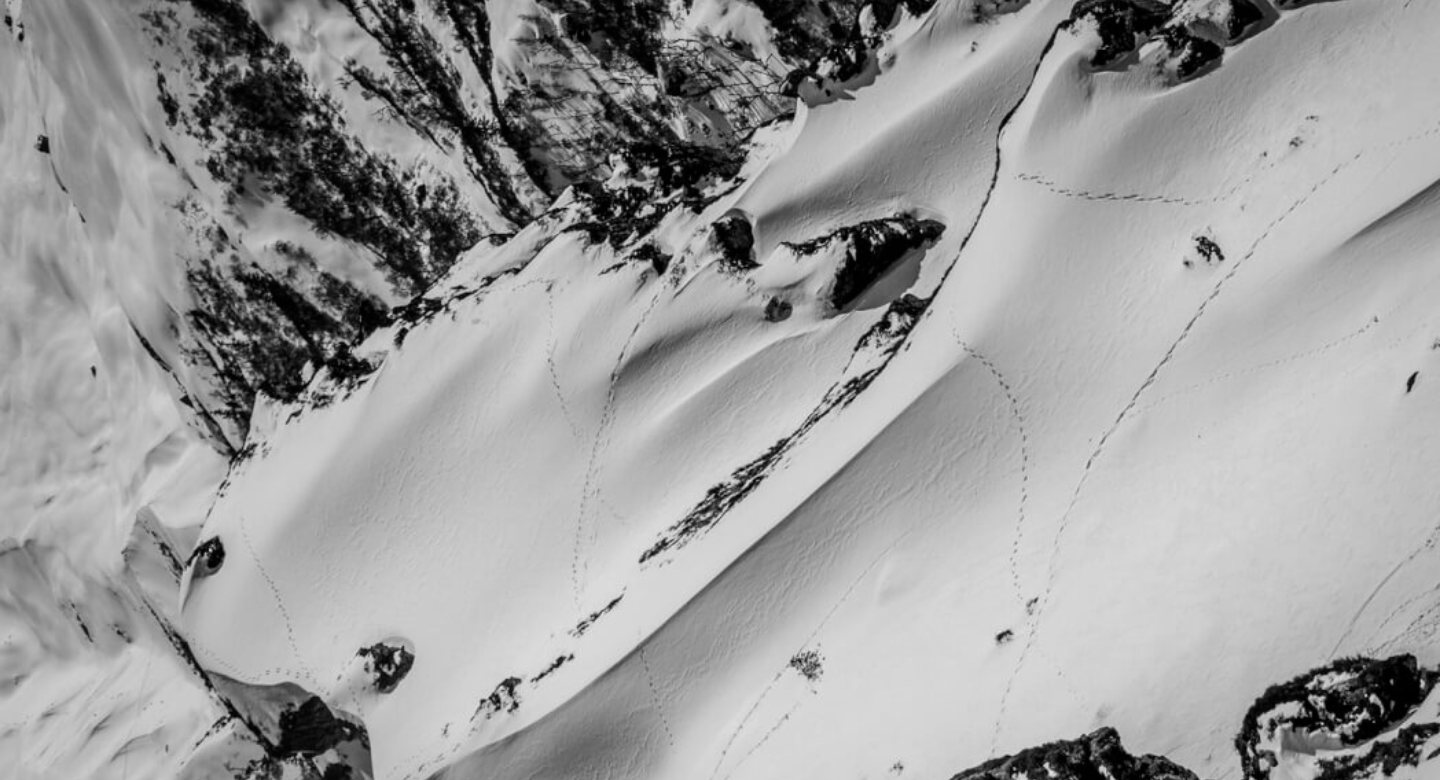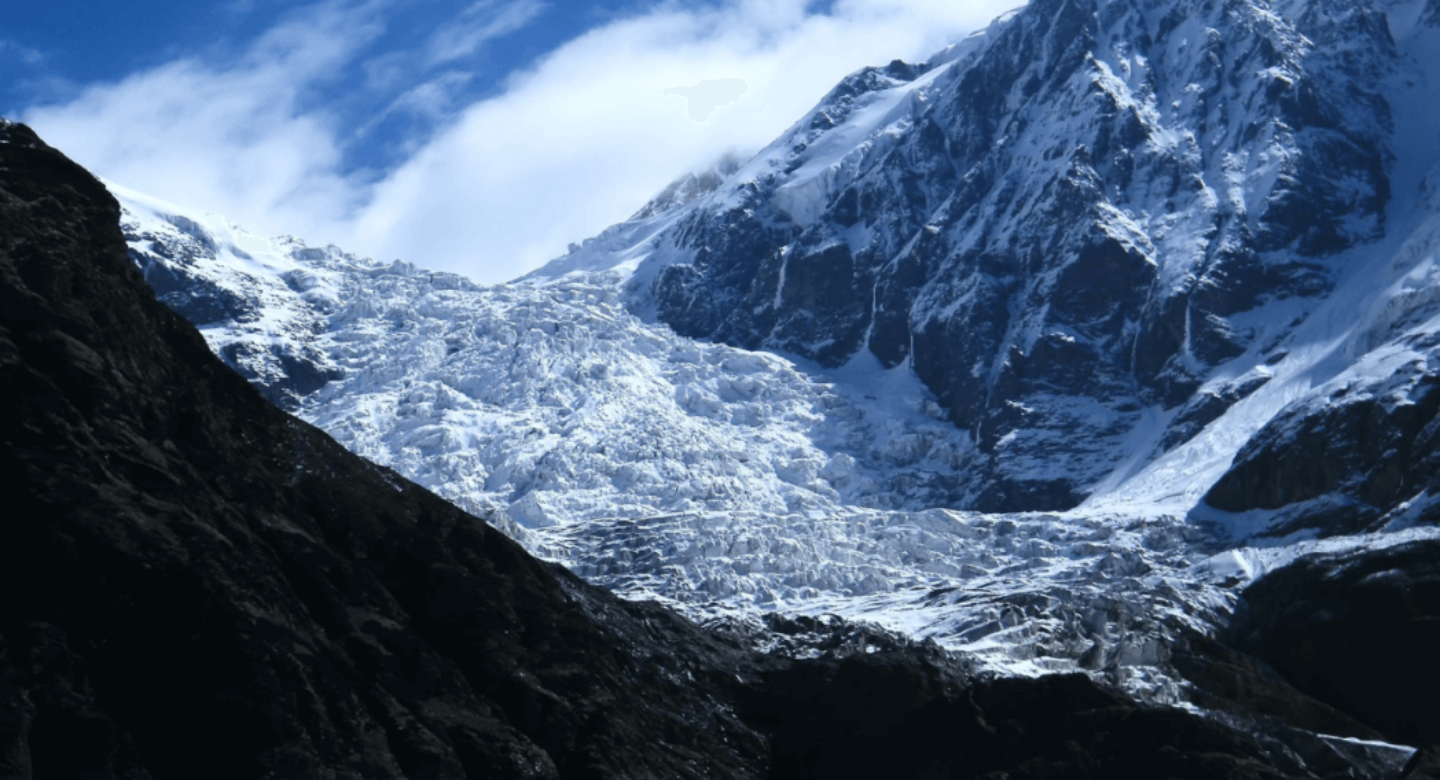
Nanda Devi Base Camp Trek
10 Days
110 Km
13,780 FT
18+
Difficult
The Nanda Devi Base Camp Trek is a breathtaking adventure into the heart of the Himalayas, leading to the base of Nanda Devi (7,816 m), India’s second-highest peak. Located in Uttarakhand, this trek takes you through the Nanda Devi Biosphere Reserve, a UNESCO World Heritage Site, offering a mix of lush meadows, dense forests, glacial valleys, and stunning snow-clad peaks. The trail provides a glimpse into remote Himalayan villages, allowing trekkers to experience the region’s rich culture and traditions. A moderate to challenging trek, it is ideal for seasoned trekkers looking for an offbeat and awe-inspiring Himalayan experience.
Highlights
Close-up View of Nanda Devi – Stand at the base of one of the world’s most majestic mountains, soaking in its grandeur.
UNESCO-listed Nanda Devi Biosphere Reserve – Explore a pristine wildlife sanctuary filled with rare Himalayan flora and fauna.
Diverse Landscapes – Trek through dense rhododendron forests, vast meadows, and rugged glaciers, offering stunning scenery.
Remote and Offbeat – A less-explored route, perfect for those seeking solitude and a true Himalayan wilderness experience.
Cultural Exploration – Pass through remote villages, experiencing the warm hospitality and rich traditions of the Johar Valley people.
Included/Excluded
Select Dates
Guest in maximum
BOOK NOWItinerary for
Nanda Devi Base Camp Trek
Day 1
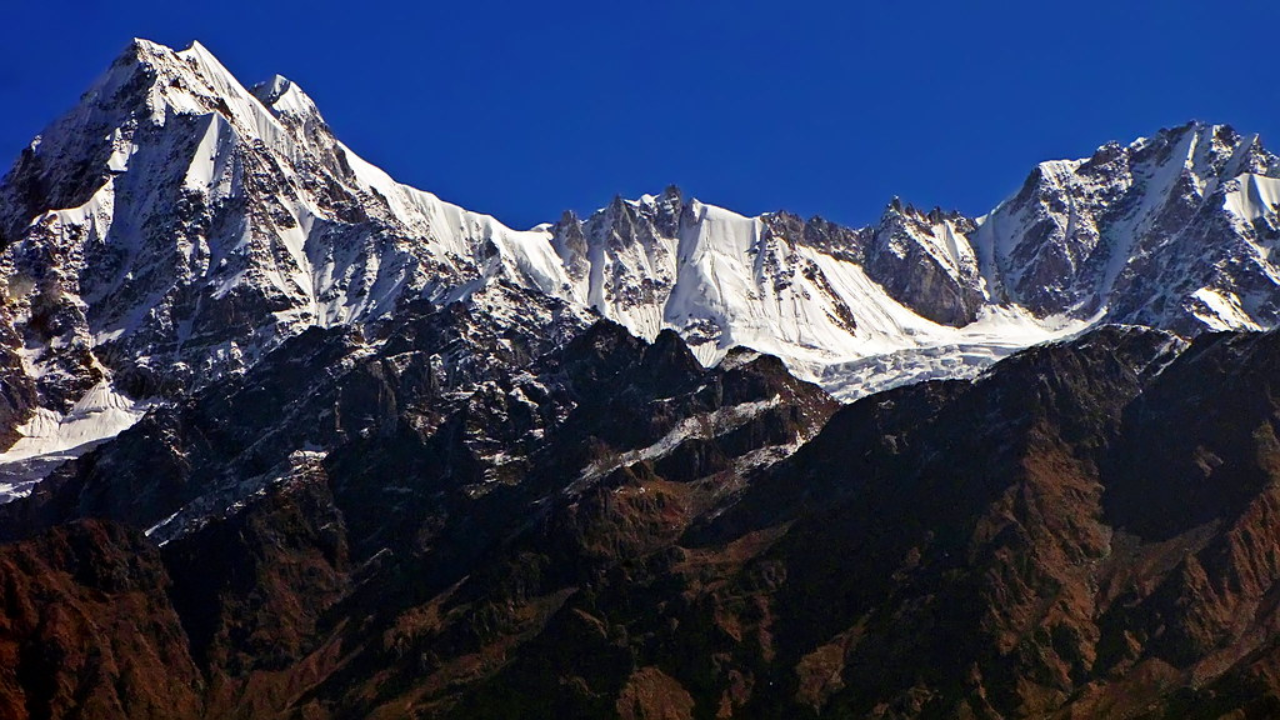
Day 2
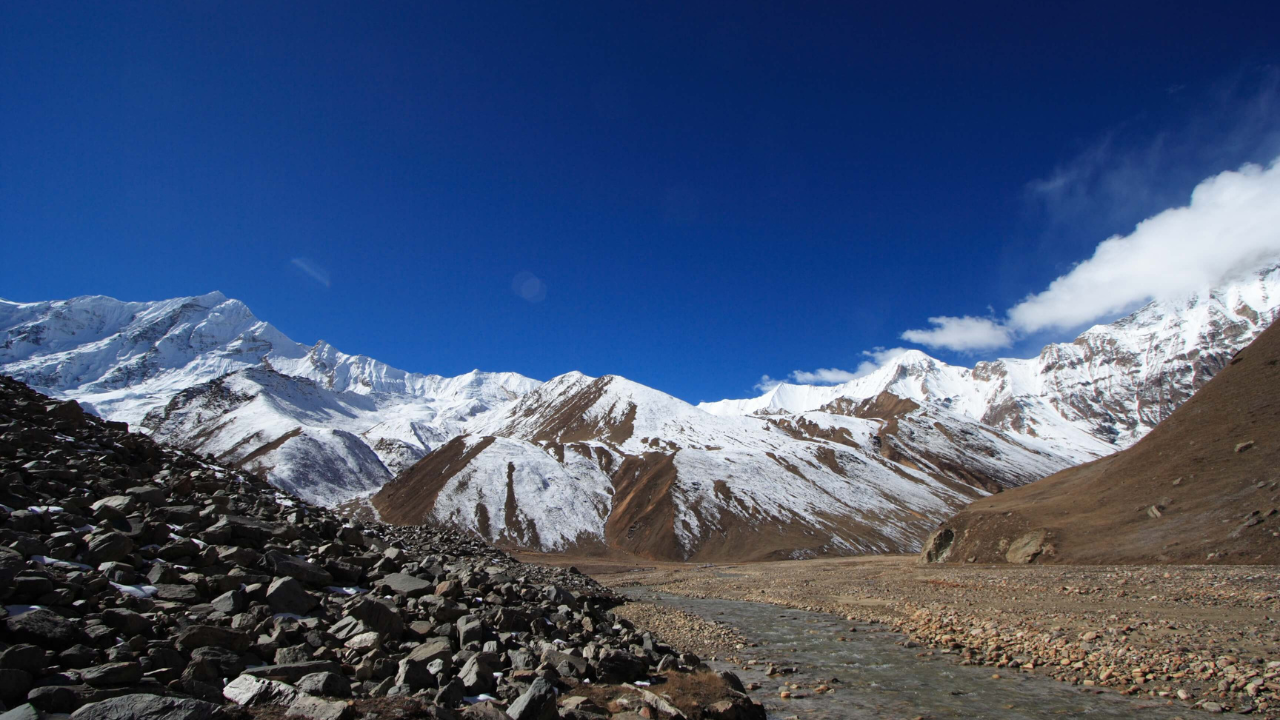
Day 3

Day 4
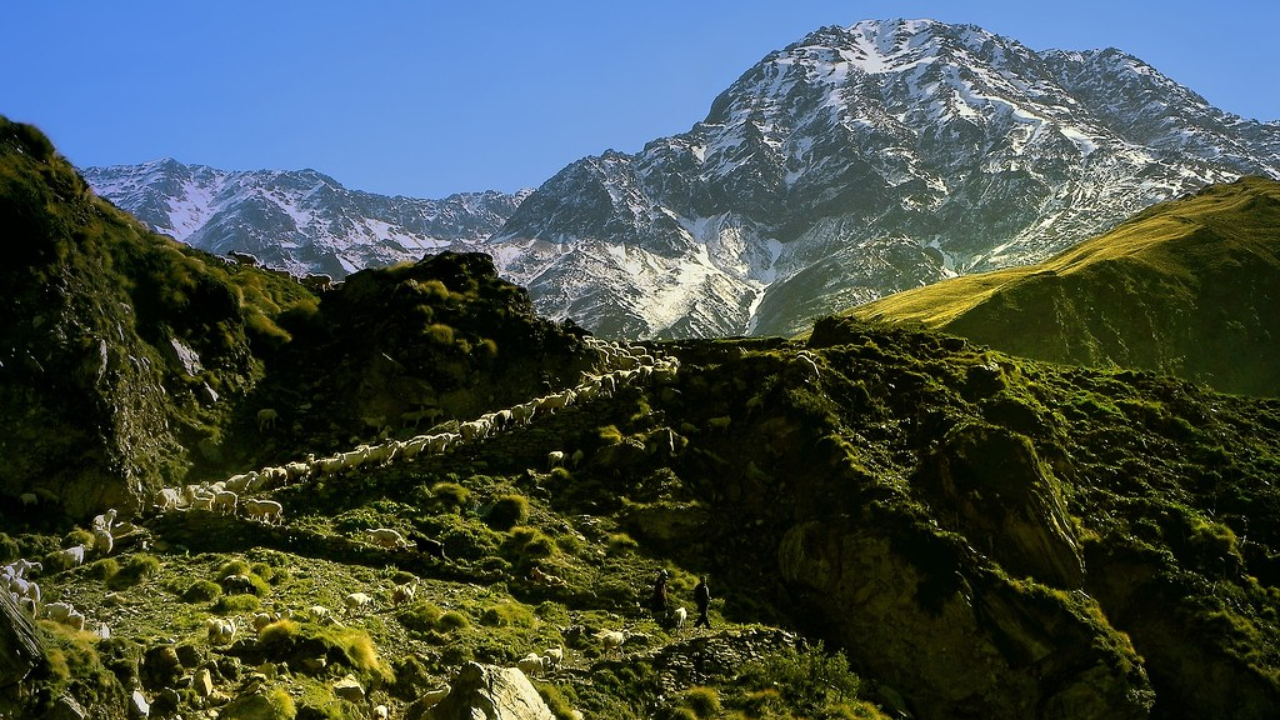
Day 5

Day 6

Day 7
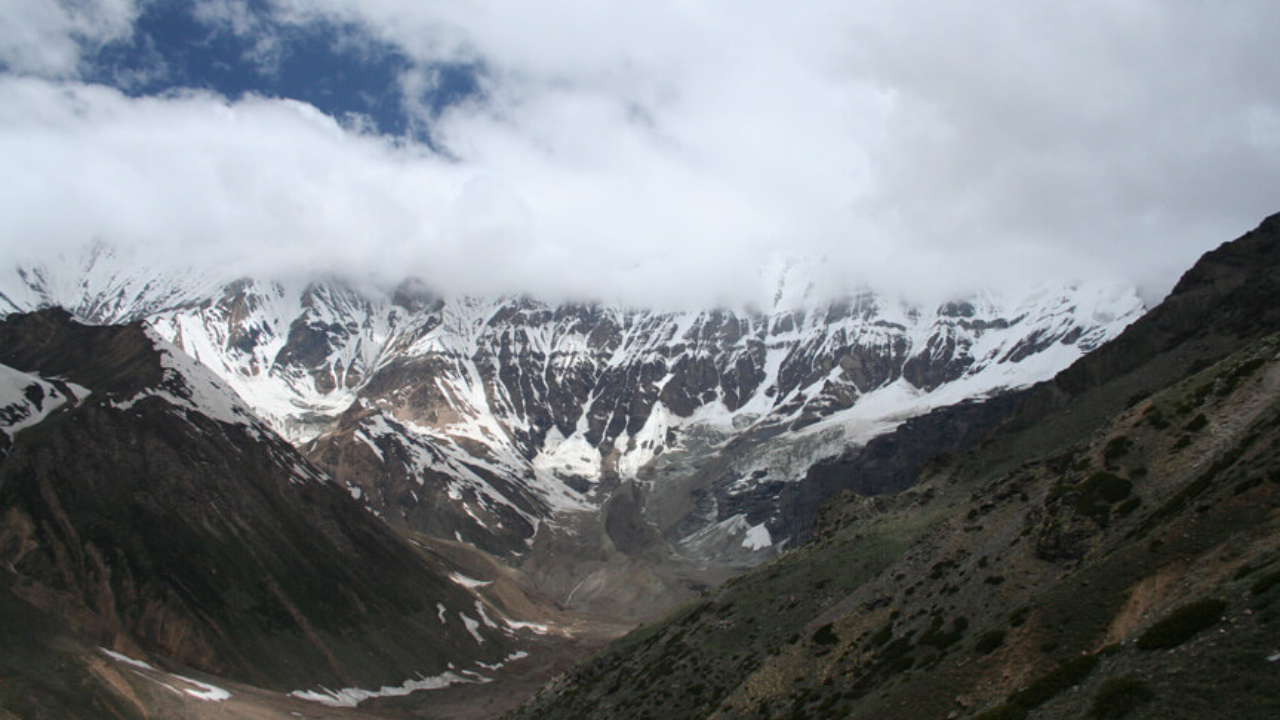
Day 8
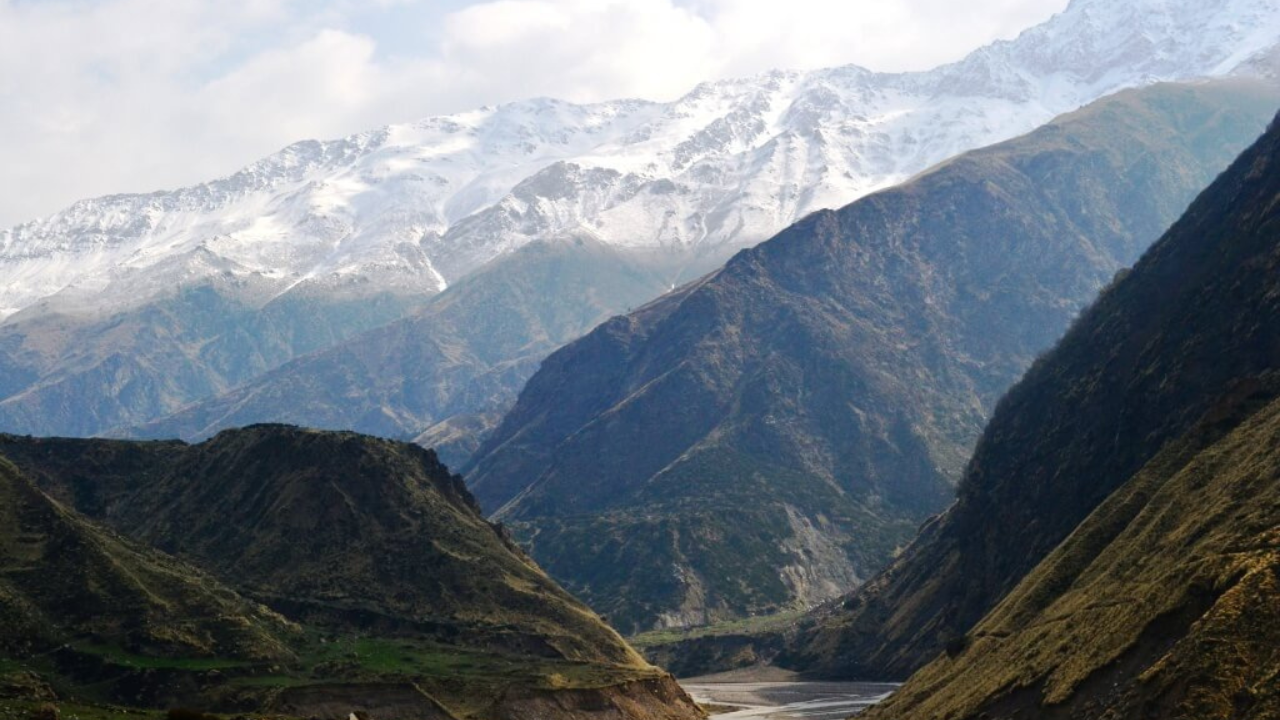
Day 9

Day 10
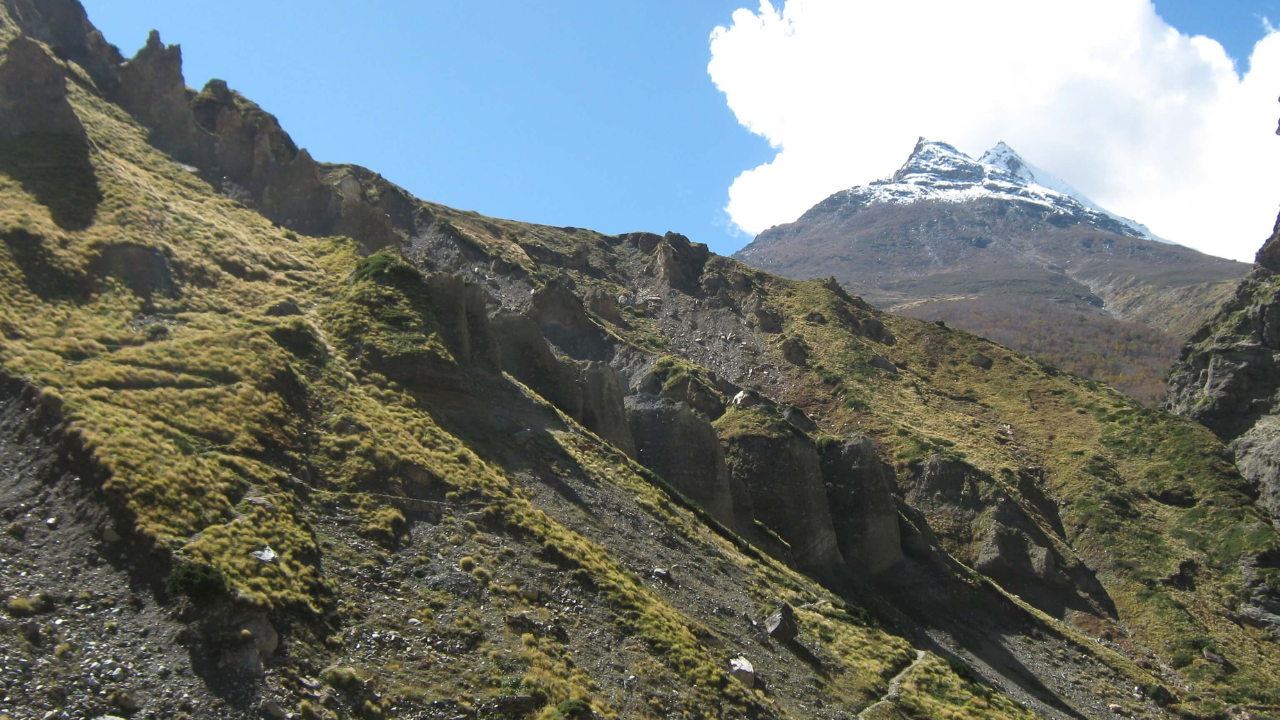
Complete Nanda Devi Base Camp Trek Information
The best time for the Nanda Devi Base Camp Trek is from May to June and September to October. Summer (May-June) offers pleasant weather, blooming alpine flowers, and clear mountain views. Autumn (September-October) provides stunning golden landscapes and excellent visibility of the peaks. Winter (November-April) is extremely cold with heavy snowfall, making the trek inaccessible. Monsoon (July-August) should be avoided due to landslides and slippery trails.
By Air
The nearest airport is Pantnagar Airport (PGH), Uttarakhand.
-
Distance: ~340 km from Munsiyari
How to Reach from Pantnagar:
-
Hire a taxi to Almora or Pithoragarh and then continue to Munsiyari.
-
Public transport is available, but it requires multiple changes via Haldwani, Almora, Pithoragarh, and Thal.
-
Alternative Airport: Indira Gandhi International Airport (Delhi, DEL). From Delhi, take a train or bus to Kathgodam or Haldwani, then proceed to Munsiyari.
By Train
The nearest railway station is Kathgodam Railway Station (KGM).
-
Distance: ~280 km from Munsiyari
How to Reach from Kathgodam:
-
Take a bus or shared taxi from Kathgodam to Almora, then another taxi/bus to Munsiyari.
-
Direct taxis are available, but public buses require multiple transfers via Pithoragarh or Thal.
-
Alternative Rail Station: Haldwani Railway Station (connected to Delhi, Lucknow, and other major cities).
By Road
Munsiyari is well connected by road, but the journey is long and takes 10-12 hours from major towns.
From Delhi
-
Option 1: Take an overnight bus to Haldwani/Kathgodam, then hire a taxi to Munsiyari.
-
Option 2: Drive from Delhi → Haldwani → Almora → Bageshwar → Munsiyari (around 600 km, ~18 hours).
From Haldwani/Kathgodam
-
Buses are available to Almora, Pithoragarh, or Thal, from where you can take a shared taxi to Munsiyari.
From Pithoragarh
-
Direct shared taxis and local buses operate from Pithoragarh to Munsiyari.
Best Route Recommendation
-
Fastest Option: Fly to Pantnagar, and take a taxi to Munsiyari (~10-12 hours).
-
Budget-Friendly Option: Take a train to Kathgodam, then a bus/shared taxi to Munsiyari.
-
Self-Drive Option: Drive via Haldwani → Almora → Bageshwar → Munsiyari for scenic beauty.
Pack smart, trek safe!
Ensure you're prepared for every adventure with this essential checklist of gear and supplies. Whether you're a beginner or a seasoned trekker, the right equipment makes all the difference. Download checklist's pdf here
Basic Gear
| Backpack with Rain Cover | (40 - 50 ltr) Comfortable Shoulder Straps |
| Day pack with Rain Cover | 20 - 30 ltr (If off-load opted) |
| Walking stick | Advisable (At least one) |
| Water Bottle / Hydration pack | 2 Bottles(1 liter each), Hydration Pack 1 (Pack) + Bottle |
| Small size tiffin/lunch box | 1 Nos |
| Snacks | Energy bars, dry fruits, electral/ors |
| Personal Medical Kit | Consult your doctor |
Clothing
| T-Shirt (Synthetic quick dry) | 1 Full & 1 Half sleeves |
| Fleece T-shirt | 1 Nos |
| Wind stopper / Fleece jacket | 1 Nos |
| Windproof Jacket | 1 Nos |
| Down feather / Hollow jacket | 1 Nos |
| Thermal inner (Upper and Lower) | 1 Nos |
| Trek Pant (Synthetic quick dry) | 1 Nos |
| Wind stopper / Fleece Pant | Not required |
| Waterproof gloves | Not required |
| Fleece / woollen gloves | 1 Pair |
| Poncho / waterproof Jacket and pant | 1 Nos |
Head Gears
| Head torch | 1 Nos. (Avoid Hand torch) |
| Sun cap | 1 Nos. (One that covers the neck as well) |
| Woolen cap | 1 Nos. |
| Balaclava | Not required |
| Buff / Neck-gaiters | 1 Nos |
| Sunglasses | UV with dark side cover, People who wear spectacles - (A)- Use contact lenses | (B)- Photo chromatic glasses |
Foot Gears
| Trekking shoes | 1 Pair (Waterproof, high ankle with good grip) |
| Floaters / flip-flops | 1 Pair |
| Cotton socks | 6 pairs |
| Woollen socks | 1 pairs |
| Gaiters | 1 Pair (TTH provides when required) |
| Micro spikes | 1 Pair (TTH provides when required) |
Personal Utilities
| Sunscreen cream | 1 Nos |
| Moisturiser | 1 Nos |
| Chap-stick / Lip balm | 1 Nos |
| Toothbrush and toothpaste | 1 Nos |
| Toilet paper & Wipes | 1 Nos |
| Soap / hand sanitizers | 1 Nos |
| Antibacterial powder | 1 Nos |
| Quick dry towel | 1 Nos |
At Scoutripper, we understand that plans can change. You can reschedule your booking up to 24 hours before your experience begins. Changes are subject to availability and any applicable price adjustments. Rest easy knowing your adventure is flexible!
At Scoutripper, we value flexibility but also adhere to clear cancellation guidelines:
- Full Refund: Cancel at least 6 full days before the experience starts.
- 50% Refund: Cancel between 2 and 6 full days before the start time.
- No Refund: Cancellations made less than 2 full days before the experience start time will not be refunded.
Additionally:
- Changes are not accepted less than 2 full days before the experience begins.
- Cut-off times are based on the local time of the experience.
- Some experiences require a minimum number of participants. If the minimum isn’t met, you’ll receive a full refund or the option to reschedule.
Enjoy peace of mind with our clear and transparent policies!
ATM Availability:
-
Last ATM: Munsiyari (limited cash availability).
-
Best Option for Cash Withdrawals: Almora or Pithoragarh (more reliable).
-
Carry at least Rs 5,000 - 7,000 for transport, gear rentals, and personal expenses.
Mobile Network & Internet:
-
Network Available Till Munsiyari – BSNL has the best coverage. Airtel and Jio work intermittently.
-
Beyond Munsiyari: No network connectivity during the trek.
-
Tip: Inform your family about poor connectivity before starting the trek.
Electricity:
-
Munsiyari is the last place with electricity and charging points.
-
No electricity beyond Munsiyari – bring:
-
Power bank (10,000+ mAh or more)
-
Extra camera batteries
-
Keep batteries warm in your sleeping bag to prevent quick draining in the cold.
FAQs about
Nanda Devi Base Camp Trek
The Nanda Devi Base Camp Trek is located in the Kumaon region of Uttarakhand, India, near the famous Nanda Devi National Park. The trek takes adventurers to the eastern base camp of Nanda Devi (7,816 meters), India’s second-highest peak. It offers breathtaking views of the Himalayan range, remote villages, and pristine alpine meadows.
The trek is considered moderate to challenging, and suitable for experienced trekkers with good physical fitness. The trail includes steep ascents, river crossings, and rugged terrain, making it demanding. Trekkers need to cover around 110 km over 10-12 days, gradually acclimatizing to the altitude as they reach the base camp at 4,200 meters.
The best time for the trek is May to June and September to October. During these months, the weather is stable, and the skies are clear, providing stunning views of the peaks. The monsoon season (July-August) brings heavy rainfall, making trails slippery, while winters (November-April) are extremely cold with heavy snowfall.
The trek begins from Munsiyari, a small town in Uttarakhand. To reach Munsiyari, one can take a train or flight to Kathgodam and then travel by road. The drive from Kathgodam to Munsiyari (290 km) takes about 10-12 hours through scenic mountain roads, passing through places like Almora and Pithoragarh.
The trek offers a mix of dense forests, high-altitude meadows, remote Himalayan villages, and panoramic views of the Nanda Devi range. Trekkers pass through Rilkot, Martoli, and Bugdiyar villages, which have ancient houses and rich cultural heritage. The trek also takes you through Milam Glacier, adding to its scenic beauty.
Yes, since the trek passes through the Nanda Devi Biosphere Reserve, trekkers require special permits from the Forest Department and local authorities in Munsiyari. If you are trekking with an organized group, they usually arrange the necessary permits. It is advisable to carry valid ID proof and extra photocopies.
Since the trek reaches an altitude of 4,200 meters, altitude sickness can be a concern. Symptoms like headache, nausea, dizziness, and breathlessness may occur. Proper acclimatization, hydration, and a gradual ascent are crucial to avoid Acute Mountain Sickness (AMS). Trekkers should avoid alcohol, take proper rest, and listen to their bodies.
Accommodation includes basic guesthouses or tents in villages like Lilam and Martoli. After these villages, trekkers rely on camping at high-altitude locations. Food is basic but nutritious, including dal, rice, vegetables, chapati, and instant noodles. Carrying snacks, energy bars, and hydration salts is recommended.
Trekkers should pack layered clothing, a good quality sleeping bag, sturdy trekking shoes, a rain jacket, gloves, a first-aid kit, and a headlamp. Essentials include sunscreen, sunglasses, trekking poles, and personal medication. A water purification bottle is useful since water sources are available along the way.
Absolutely! The trek offers a once-in-a-lifetime experience with its stunning landscapes, Himalayan culture, and incredible mountain views. It provides an opportunity to explore one of the most isolated and untouched regions of the Himalayas, making it perfect for adventure enthusiasts and nature lovers.


